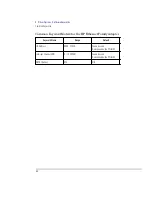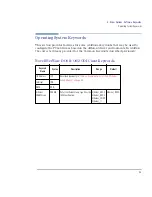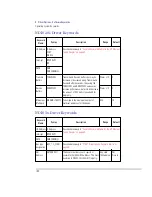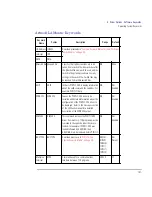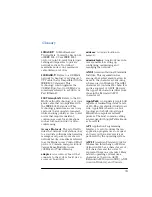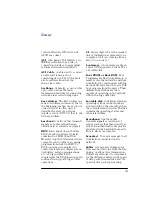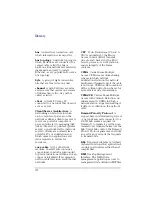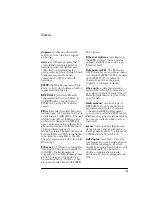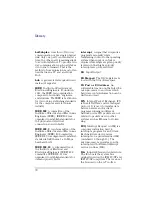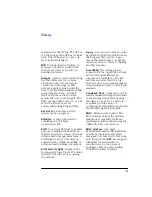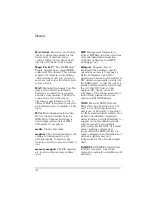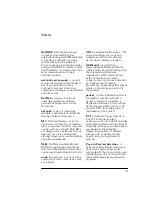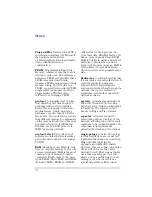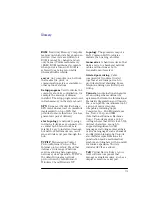
Glossary
English
112
ROM
Read Only Memory. Computer
memory on which data have been pre-
written. Once data are written to a
ROM it cannot be changed and can
only be read. Unlike main memory
(RAM), ROM maintains its contents
when power is turned off. ROM is
referred to as being non-volatile,
whereas RAM is volatile.
server
Any computer on a network
that makes file, print, or
communication services available to
other network stations.
Setup program
Used to inform the
computer about its configuration, for
example the amount of memory
installed. The setup program is stored
in flash memory on the system board.
SPX
Sequenced Packet Exchange.
SPX is an enhanced set of commands
implemented on top of IPX that
provides for more functions (such as
guaranteed packet delivery).
star topology
A network topology
in which all devices are connected to
a central hub. Star networks are
relatively easy to install and manage,
but network bottlenecks can occur
since all data must pass through the
hub.
TCP/IP
Transmission Control
Protocol/Internet Protocol. The
Internet protocol stack_Stack that
defines a wide range of network
services allowing heterogeneous
network system operation. TCP/IP is
the default wide area network
protocol used by both Microsoft
Windows 95 and Windows NT.
topology
The geometric map of a
LAN. Common LAN topologies
include the bus, ring, and star.
transceiver
A hardware device that
links a node to a baseband network
cable and functions as both
transmitter and receiver.
twisted pair wiring
Cable
comprised of two wires twisted
together at six turns per inch to
provide electrical shielding. Some
telephone wiring uses twisted pair
wiring.
Unicode
An international character
set encoding scheme defined by
agreement between the International
Standards Organization and Unicode,
Inc., a non-profit consortium set up by
a group of major computer
companies, including Apple
Computer, Inc., Sun Microsystems,
Inc., Xerox Corp., and IBM
(International Business Machines
Corp.). Unicode employs a 16-bit
coding scheme that allows for 65,536
distinct characters, enough to
support all significant world
languages, including several archaic
or arcane languages such as Sanskrit
and Egyptian hieroglyphs. Unicode
also includes representations for
punctuation marks, mathematical
symbols, and dingbats, with room left
for future expansion. Unicode
includes ASCII as a subset.
VxD
Virtual Device Driver. A low-
level software component that
manages a single resource, such as a
display screen or a serial port.
Summary of Contents for Vectra VL6 7
Page 1: ...Network Administrator Guide Online Guide Rev 5 0 Date 8 97 ...
Page 9: ...1 Setting Up the Network Connection ...
Page 19: ...2 Installing Novell NetWare Drivers ...
Page 42: ...2 Installing Novell NetWare Drivers NET CFG Options for Novell NetWare 42 English ...
Page 43: ...3 Installing Microsoft Network Drivers ...
Page 56: ...3 Installing Microsoft Network Drivers NDIS 2 01 and 3 1 for Windows 95 56 English ...
Page 57: ...4 Installing Other Network Drivers ...
Page 76: ...4 Installing Other Network Drivers NDIS 2 01 Driver with Other Networking Products 76 English ...
Page 77: ...5 Configuring for Remote Boot ...
Page 95: ...6 Driver Options Software Keywords ...
Page 102: ...6 Driver Options Software Keywords Operating System Keywords 102 English ...

